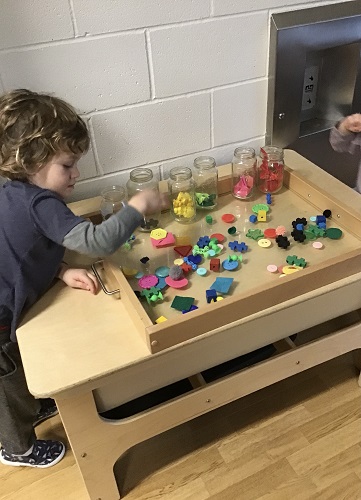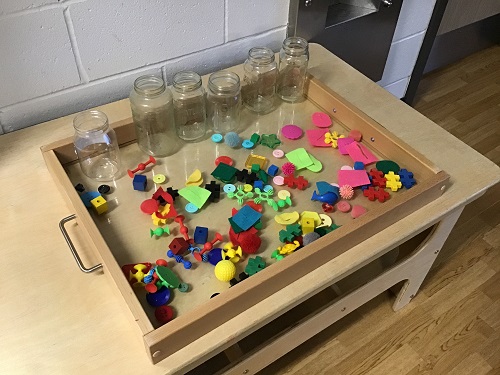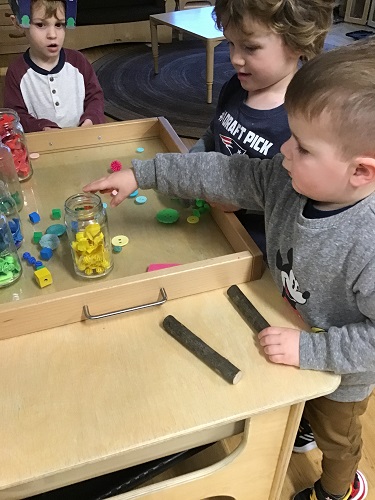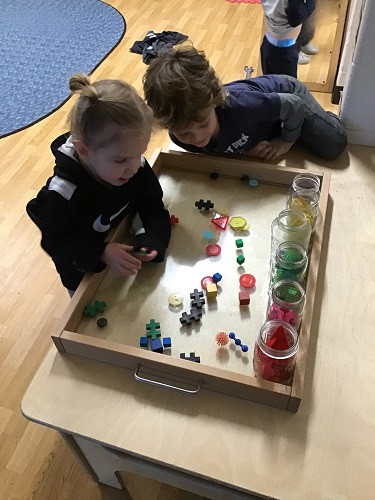This past month in the Preschool 1 classroom, the children have been exploring emotions and empathy in a variety of ways. The interest peaked as the educators introduced zones of regulation, with displays around the classroom for the children to reflect and view as needed throughout the day.
While reading books one day educator Alyssa remembered the book ‘The Colour Monster’ that follows a monster whose feelings, or colours, are all mixed up and he needs help to sort and label each of the emotions he is feeling.
We then took a look through our cupboard to see what loose parts and small items we had that were red, green, yellow, blue, pink, and black to be able to sort and organize like the monster in the book. At first the preschoolers used the jars to sort and seemed excited when each of the items was in their respective jar, but as time passed and the children continued exploring, more conversations came up about feelings and emotions and that sometimes we feel one way (emotion) and that it can be tricky to sort and organize our emotions to determine how we are actually feeling.
These types of experiences allow children to gain a deeper understanding of sorting and organizing as well and dig deeper into emotional regulation and recognition. It supports a sense of belonging by beginning to show concern and empathy towards others and moving towards taking actions to assist peers emotionally, a sense of well-being through engagement with self-regulation strategies. A sense of engagement by communicating with peers, specifically feelings of their own and others, and lastly expression through the use of various forms of communication of feelings from facial expression, verbal and even the use of images or zones of regulation posted up on the walls.
Moving forward we are able to extend this learning by digging even deeper into our emotions and finding ways to represent how we are feeling with others. We could also take photos of each child and the ways they show each emotion, taking photos while they are showing an angry face, sad face, and what it looks like while they are happy. This will encourage the children to begin to understand how someone may be feeling without verbally communicating as well as giving them the autonomy to reflect on how they look while feeling a specific emotion or way.
